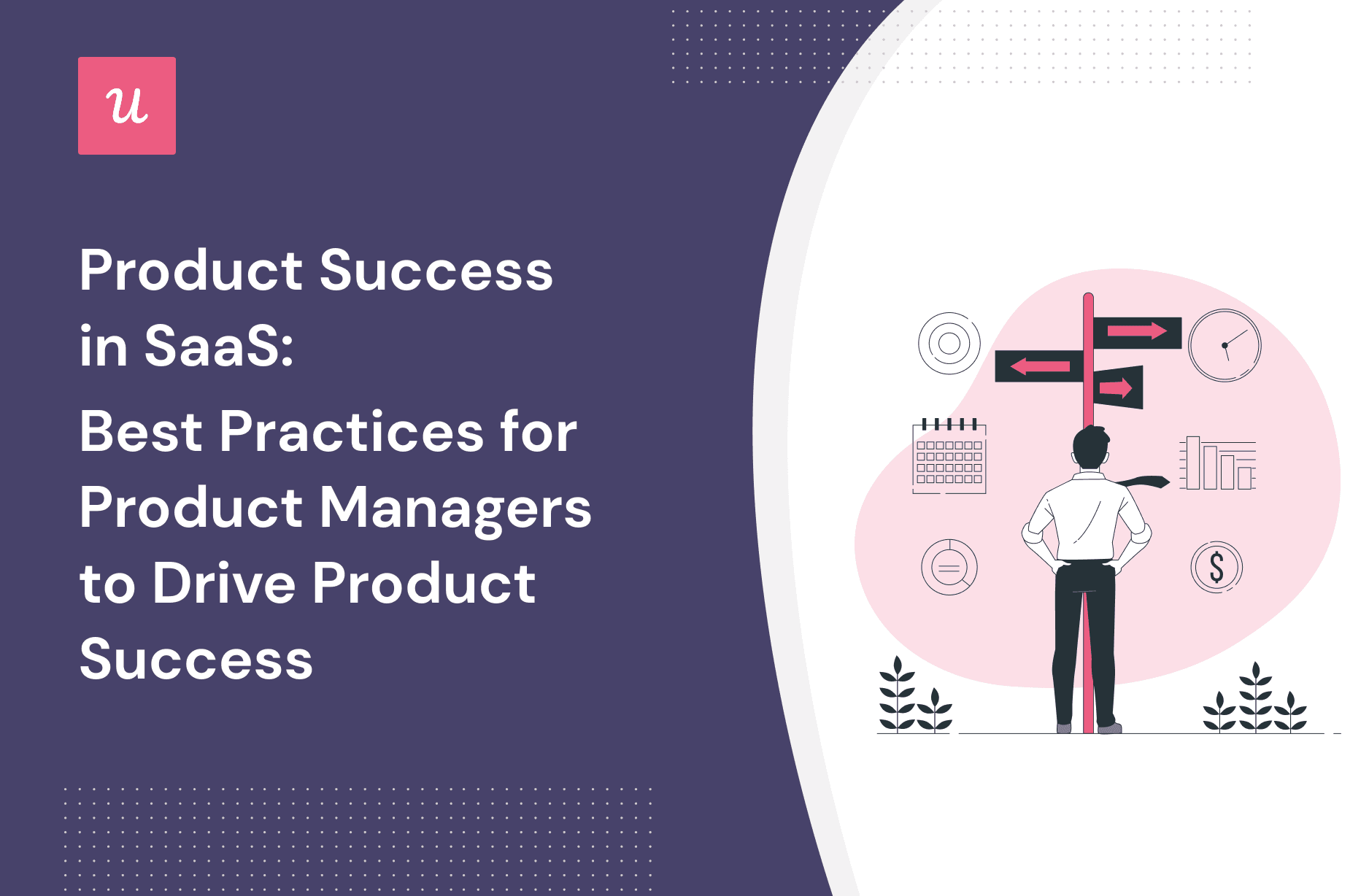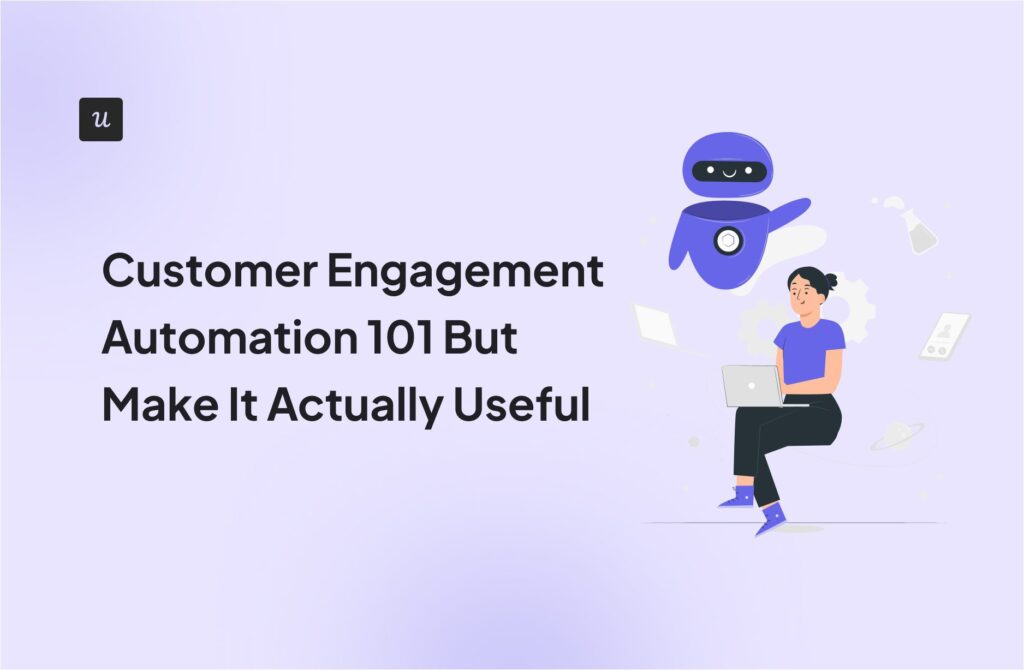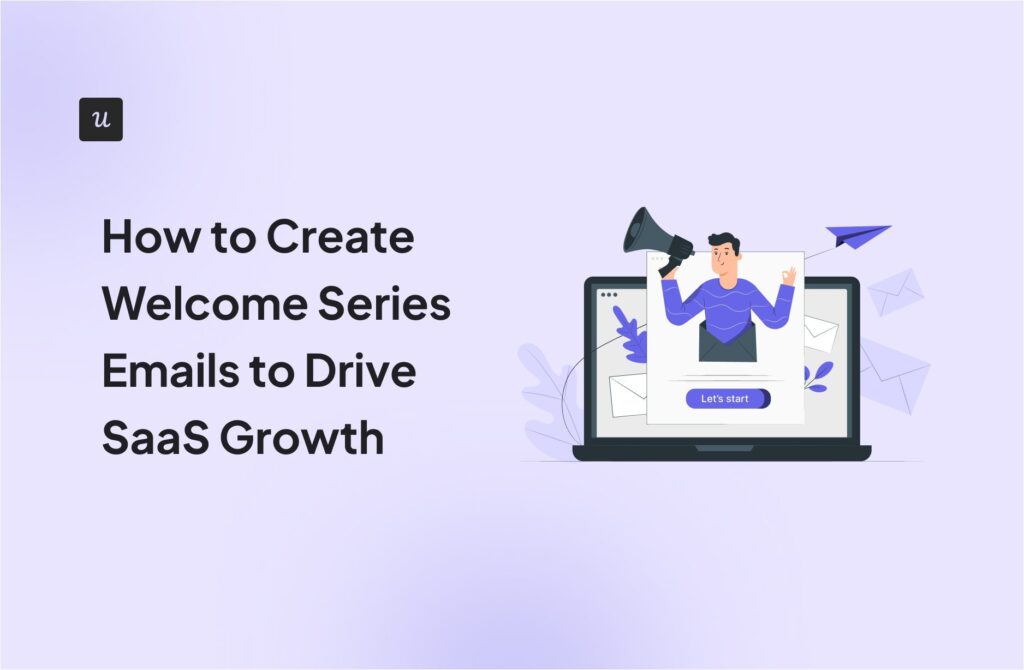
Product Success in SaaS: Best Practices for Product Managers To Drive Product Success
What is product success? What can product managers do to improve their chances of building successful products? How can they measure that their product is on a path to success?
These are the three key questions we explore in the article, so if you’re after the answers, you’re in the right place!
Are you ready to dive in?
Get The Insights!
The fastest way to learn about Product Growth, Management & Trends.
TL;DR
- Successful SaaS products satisfy user needs and realize organizational business goals.
- Product success is necessary both for the product manager and for the organization to grow.
- To build successful products, make sure to align the product strategy with the product vision.
- Continuous product discovery is necessary to keep up with the changes in user and market needs.
- PMs of successful products build features in response to user needs.
- Understanding user needs is necessary to avoid falling into build traps. It allows you to develop functionality because it solves their real problems and because they ask for it or to match your competitors.
- Product-Market Fit is a measure of how well your product satisfies your user needs.
- Building the perfect product before launching is not possible. It’s best to build your MVP (or MLP/MDP) with minimum viable features and use user data to iterate on it.
- Instead of releasing big batches of updates, launch in small increments and iterate on them using empirical evidence.
- Once the update or feature is out, announce it using multiple channels like in-app communications or email.
- Use in-app surveys to collect feedback on product performance and ideas on how to improve it.
- Tracking product usage gives you an objective view of user engagement and allows you to improve it with in-app messages.
- To choose the best in-app experiences for your users, A/B test them.
- Sunsetting features with low usage rate not only saves you money and time but also makes the product UI easier to navigate.
- To measure product success, use a range of engagement metrics (feature usage rate or product adoption rate), customer satisfaction metrics (CSAT or NPS), retention metrics (customer retention rate, customer churn rate), or revenue metrics (CAC and CLV).
- Want to see how Userpilot helps PMs build successful products? Book the demo!
What is product success in SaaS?
We talk about product success in SaaS when the product achieves its goals.
Specifically, it needs to address relevant user pain points, needs, and desires. What’s more, customers need to view the product as a solution to their problems. This results in high product engagement and adoption.
A successful product also needs to meet organizational goals. In short, it needs to justify its existence by bringing enough revenue and generally making the company more competitive.
Why should a product manager care about product success?
A product manager needs to care about product success if they want to keep their job. That’s kind of a no-brainer really.
If the product disappoints users, they will churn.
Low retention rates will have a negative impact on revenue and profits. This may be acceptable up to a point, but if the product fails to deliver on business goals consistently, it will go down.
And the PM will most likely share its fate.
Best practices that contribute to product success
So how can product managers improve their odds of building a successful product that will delight customers and drive organizational goals?
Let’s look at some good practices that you can apply at different stages of the product management process.
A Successful product has an aligned product vision and strategy
A product vision is necessary to build successful products because it defines what success is, for a particular product.
It is the North Star that sets out the long-term direction for the team and shows what they need to achieve.
If product vision is the goal, product strategy is the plan to its realization. It is more detailed and defines the market for the product, the problems it solves, key differentiators, and its USP.

Continuous discovery for continuous learning across the product development process
Products achieve success because they solve user problems well.
How can you know what problems to solve?
For that, you need product discovery, which involves customer and market research. It allows teams to identify unsatisfied needs that customers face and solutions they would be happy to pay for.
The catch is that the customer needs change as much as the competitive landscape. Problems that were once worth solving, lose their relevance. That’s why product discovery should be an ongoing process.
For example, product managers and product owners should make a habit of interviewing customers regularly to identify new opportunities.
Feature backlog prioritization based on customer needs
Which features your team develops and iterates on should always depend on customer needs.
There are different ways of figuring out what your customers need. The easiest one is listening to their requests. It’s easy to add a feature request widget to your product and solicit customer ideas.

Or you can create a public roadmap that will give users a chance to raise their feature requests. If you use a project management tool like Trello, your users will also be able to vote ideas up and down. This will help you prioritize your ideas.
Avoid the feature fallacy trap (or the feature parity trap)
When you build features based on customer requests, you increase your chances of building a product that satisfies their needs.
However, this comes with risks. For example, you may end up building features for the most vocal power users and not the majority of your customers.
The same applies to building features to achieve feature parity with competitors. The fact that your competitors offer a feature doesn’t mean you should as well.
Before you commit to any feature development, you validate the ideas first. Try to understand the true nature of the user problem and check it against your product vision. This will help you avoid falling into the common build traps.
Assess product-market fit to check if the product meets customer needs
Your product achieves product-market fit when there are enough customers ready to pay for it in the market. It’s an indication of how successful your product is at satisfying user needs, so track it regularly.
How can you do it?
PMs use the Sean Ellis test for this purpose. It asks customers how disappointed they would be if they could no longer use a product or feature. If more than 40% answer ‘very disappointed’, you’ve made it.
You can easily create PMF surveys is adoption tools like Userpilot.

Minimum viable… everything
It’s difficult to predict how well your product will satisfy user needs until they actually start using it. So instead of trying to develop a complete product before you launch, start small.
During your product and customer discovery, identify a set of minimum viable features and build your MVP around them. Then launch it and collect data on its performance to further refine it.
Beware of excessive minimalism though.
Many companies forget about the ‘viable’ bit and launch undercooked products that have only basic functionality but nothing to inspire users.
The idea is to captivate the users so that they want to come back to the product again, so try to develop a minimum viable experience. Make sure this includes also minimum viable onboarding so that they experience the value of your product in the shortest time possible.
Small iterations, frequent product launches
Instead of big releases once in a while, work in short iterations and launch small increments frequently.
In this way, you will be able to add value more quickly and frequently to your product and enhance the product experience.
More importantly, small but frequent releases allow you to evaluate how the new features perform and adjust course accordingly.
This will help you improve them quickly, and avoid building something your users don’t want or need in the first place.

Announce what’s new using multiple channels
Once a new feature is out, use a range of channels to announce it so that your users don’t miss it.
In-app announcements, for example, like the Miro modal with release notes below, will be more effective to engage existing active users.

The inactive or churned ones will of course miss them, so use send them an email with the information.
You can even target specific segments and let them know that the features that they missed are finally there.

And for your mobile users, create slideouts for in-app announcements to highlight new features, updates, or time-sensitive promotions.
Collect ongoing detailed feedback from new and existing customers
Collecting user feedback is essential for product success. Your users are generally happy to help, so make sure to pick their brains on how to make your product better regularly.
While quantitative feedback is great for tracking trends, prioritize qualitative feedback. This will allow you to gain a better understanding of their needs.
It’s easy to do, just add a follow-up question to your survey, and voila!

Apart from active feedback, collect passive feedback as well. Just add a widget to your resource center or menu, so that your users can easily submit their reflections whenever they wish.
A/B test in-app flows and optimize customer experience
In-app flows are great for onboarding users and helping them experience the product value. However, fine-tuning your in-app messaging is not an easy process and requires a fair bit of experimentation.
A/B tests are the best-known way of testing UI onboarding flows. After preparing another version of the flow, you trigger it for a half of the users and compare its performance to the previous one. Testing one variable after another will let you choose the best one.

Let go of features and declutter
Product success depends not only on adding new features but also killing them from time to time. There are two main reasons why sunsetting a feature can help your product.
First, you get rid of functionality that your customers don’t need anymore. Whatever the reason for low usage, there’s no point wasting resources on such features.
Second, the more features there are in a product, the more complex it is to use. This can create cognitive overload and increase the time to value.
Removing features and decluttering the UI will help your users navigate the product more easily and reach activation more quickly.
Key product success metrics for measuring your efforts
How can product managers know whether their product is successful or not?
Let’s look at a few useful key performance indicators (KPIs) that will show you if you’re heading in the right direction.
Measuring product success with product engagement metrics
Product engagement metrics measure user interactions with the product. They are valuable because they shed light on whether your customers get enough value out of the product.
Useful engagement metrics include:
- Active User Percentage/Product stickiness – shows how many customers come back to use your product regularly. We calculate it by dividing the number of Daily Active Users (DAUs) by the number of Monthly Active Users (MAUs).
- Product adoption rate – it tells you how many of the users who have signed up for the product adopt it.
- Feature usage rate – shows you how regularly and frequently users engage with the feature. The higher the number, the more value the feature delivers.
- Product Engagement Score (PES) – a high-level metric that combines Adoption Rate, Stickiness and Growth Rate.

Measure product success with customer satisfaction metrics
Customer satisfaction is an indication of product success. If your users give you positive feedback, it means they get enough value out of the product.
What are some useful metrics to follow?
- Customer Satisfaction Score (CSAT) – a figure obtained via in-app surveys asking how satisfied your users are with the product or feature. It’s one of the most straightforward ways of measuring customer satisfaction
- Net Promoter Score (NPS) – NPS surveys ask customers how likely on a scale from 1 to 10 they are to recommend the product. It gives you a quantitative value to track and divides users into three segments: promoters, passives, and detractors.

Measure product success with customer retention metrics
There are two key metrics you want to be following together:
- Customer retention is key to product success. After all, if your customers don’t stay with you, you won’t be in the business for long.
- Customer Retention Rate – a measure of how many paying customers stay with your business and renew their subscriptions. It’s useful not only to determine the current performance of the product but also to forecast the revenue it can bring in the future.

- Customer Churn Rate – shows how many customers you lose. The higher the churn, the worse for your product.
Measure product success with revenue metrics
Revenue metrics show you how well the product meets your organization’s business goals.
- Customer Acquisition Cost (CAC) – how much it costs to acquire a customer. The lower the cost, the better the ROI. Apart from customer acquisition, it’s also worth looking at sales and marketing costs.
- Customer Lifetime Value (CLV) – the total sum of revenue that a customer brings to the company during the business relationship. You want to maximize the figure, for example through cross sales and upsells, while keeping the CAC as low as possible.

- Monthly Recurring Revenue (MRR) – the revenue from all customers across all pricing plans per month.
- Average Revenue Per User (ARPU) – it’s related to MRR. We calculate it by dividing the MRR by the number of paying customers.
Conclusion
Product success depends on how well the product satisfies user needs and realizes the organization’s objectives. It often determines not only the future of the product manager but also the business.
If you want to see how Userpilot can help you make your product successful, book the demo!






